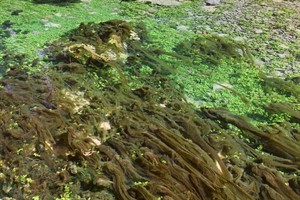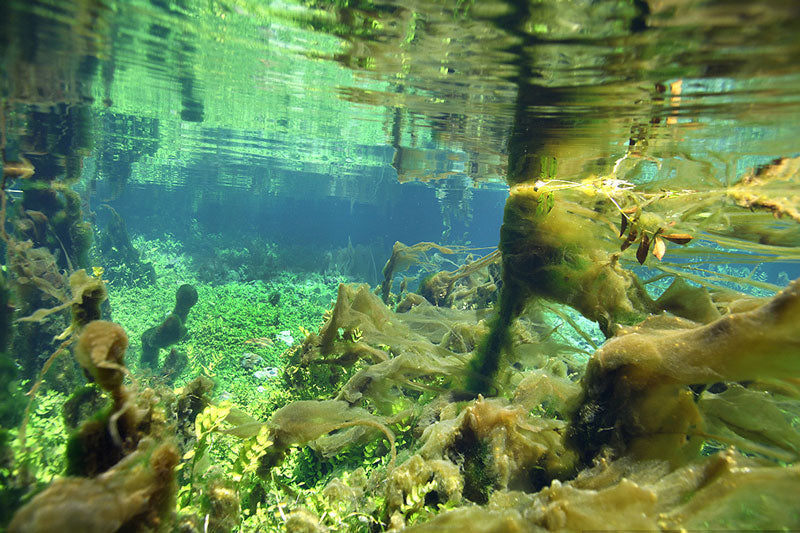Algae: The Unsung Heroes of Our Planet
Algae, the ancient pioneers of our world, were the very first organisms to harness the energy of sunlight. These early trailblazers, known as blue-green algae, played a pivotal role in shaping our oxygen-rich atmosphere. As they evolved, our planet witnessed the emergence of hundreds of thousands of distinct algae species. Today, these unsung heroes are responsible for a staggering 40% of the oxygen generated on Earth, an invaluable contribution without which our contemporary higher plants could not have thrived. The verdant hue of leaves, attributable to chlorophyll, can be traced back to the incorporation of blue-green algae into the tissues of ancient plants.
 |
Algae, aside from their historical significance, serve as crucial nutrient sources for various animal species and produce vital oxygen through photosynthesis. In our aquaria, these organisms engage in a direct competition with the aquatic plants we meticulously cultivate, a dynamic mirrored in nature itself. During our Plantahunter expeditions, we have repeatedly observed this phenomenon, whether in nutrient-rich, oxygen-deprived water bodies or carbon dioxide-enriched environments where true aquatic and marsh plants flourish.
In locales boasting abundant oxygen levels, trace elements often oxidize and precipitate, while carbon dioxide levels dwindle. In such conditions, algae outperform higher plants, illustrating the intricacies of their ecological interplay.
 |
The assertion that "algae are ugly" frequently echoes among aquarium enthusiasts. However, our Plantahunter tours have illuminated a different reality. The realm of stoneworts, a diverse and captivating algae group, challenges this notion. These organisms bear a striking resemblance to flowering plants and are sometimes mistaken for the more familiar hornwort, Ceratophyllum. It's no surprise that some botanists hypothesize that stoneworts may represent the direct ancestors of modern terrestrial plants.
The genus Chara, the botanical label for stoneworts, spans across every continent, including multiple European species, some thriving in Germany. They all share a common preference for low-nutrient, high-lime environments. As many water bodies grapple with increasing organic pollution, numerous Chara species find themselves on the Red List of Endangered Species. The presence of stoneworts often serves as a reassuring indicator of an undisturbed environment. Our Plantahunter expedition in Brazil unveiled the graceful beauty of these algae, and just a year later, we encountered them again on the Sulawesi Island. The rich tapestry of Chara forms in the Malili Lake System left an indelible mark, a testament to the profound allure of these remarkable algae.







1 comment
Rhonda
My rabbit snail has holes in his shell. He came from the pet store with them. I was wondering what can I do about that.
Leave a comment
This site is protected by hCaptcha and the hCaptcha Privacy Policy and Terms of Service apply.